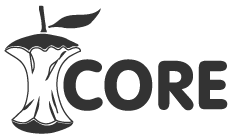
The 7th International Conference on Open Repositories (OR 2012) has seen last week close to 500 participants, the highest number in its history. The theme and title of OR 2012 in Edinburgh – Open Services for Open Content: Local In for Global Out – reflects the current move towards open content, ‘augmented content’, distributed systems and data delivery infrastructures. A very good fit with what CORE (core.kmi.open.ac.uk) offers.
The CORE system developed in KMi had a very active presence. Petr Knoth has presented different aspects of the CORE system in a presentation, at a poster session (with Owen Stephens) and also during the developers challenge. CORE has been also discussed in a number of presentations by other participants not directly linked to the Open University. Perhaps the most important case being the UK RepositoryNet+ project presentation. UK RepositoryNet+ is a socio-technical infrastructure funded by JISC supporting deposit, curation & exposure of Open Access research literature. UK RepositoryNet+ aims to provide a stable socio-technical infrastructure at the network-level to maximize value to UK HE of that investment by supporting a mix of distributed and centrally delivered service components within pro-active management, operation, support and outcome. While this infrastructure will be designed to meet the needs of UK research, it is set and must operate effectively within a global context. UK RepositoryNet+ considers the CORE system as an important component in this infrastructure. read more...



